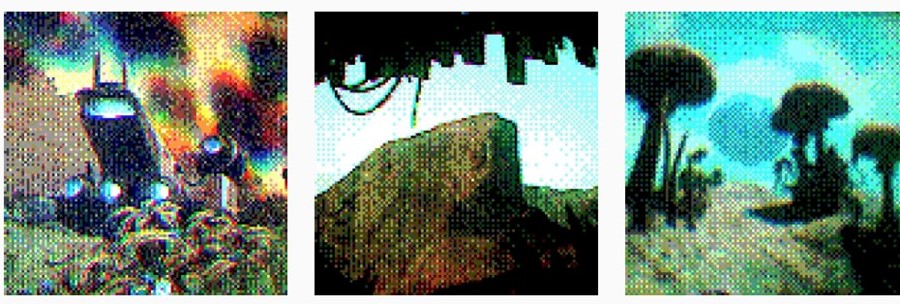Artist Jean-Jacques Calbayrac roams the capital with the 90s device, capturing the urban landscape and its inhabitants in stark, highly pixelated form
Grainy, pixelated and sparse, Jean-Jacques Calbayrac’s Instagram feed looks unlike anything else on the image-sharing app. That’s because the artist snaps his photos using the Game Boy Camera, an add-on cartridge launched in 1998, which he found many years later in a Paris flea market. “When I was young I dreamt of having it, but I couldn’t afford it,” he recalls. “Now I’m taking care of this little cube very, very carefully, because if it breaks I’m just going to be lost. I don’t know what I will do.”
The camera is black and white (although the photographer occasionally manipulates the images to add colour), and by today’s standards, the resolution is incredibly low. “It’s like 121 pixels by 112, something like that,” he explains. “So basically you have less than 20,000 pixels, which is a big joke when you compare it to now – the iPhone camera has more than 8 million pixels.”
As a result, his images – taken mostly on the streets of east London – pick up only the basic outlines of the scene, giving an almost abstract, sci-fi aesthetic to the work. “Any person in my pictures could look like someone else,” he says. “What I like is that you can really focus more on the shapes. Nowadays with our cameras, we have a million pictures, and they all have so much detail, which is amazing. But with the Game Boy camera, I’ve just taken that away. I want to show that yes, detail is great, but it’s not all that photography is about.”
The project hasn’t yet been shown in a gallery context – “Obviously I would be very interested to do that, but I don’t want to rush it,” says Calbayrac. When it does happen, he plans to blow the images up as large as possible, “where you’ve lost the picture if you’re too close, and to see it you have to step back.” In the meantime, he has been pasting prints on walls around Brick Lane, Columbia Road and Rivington Street. It’s a little more makeshift, and they are sometimes torn down, but he doesn’t seem to mind: “It’s not an exhibition – it’s in the street, by myself, with no champagne for the opening,” he says, “but it’s not a problem.”
